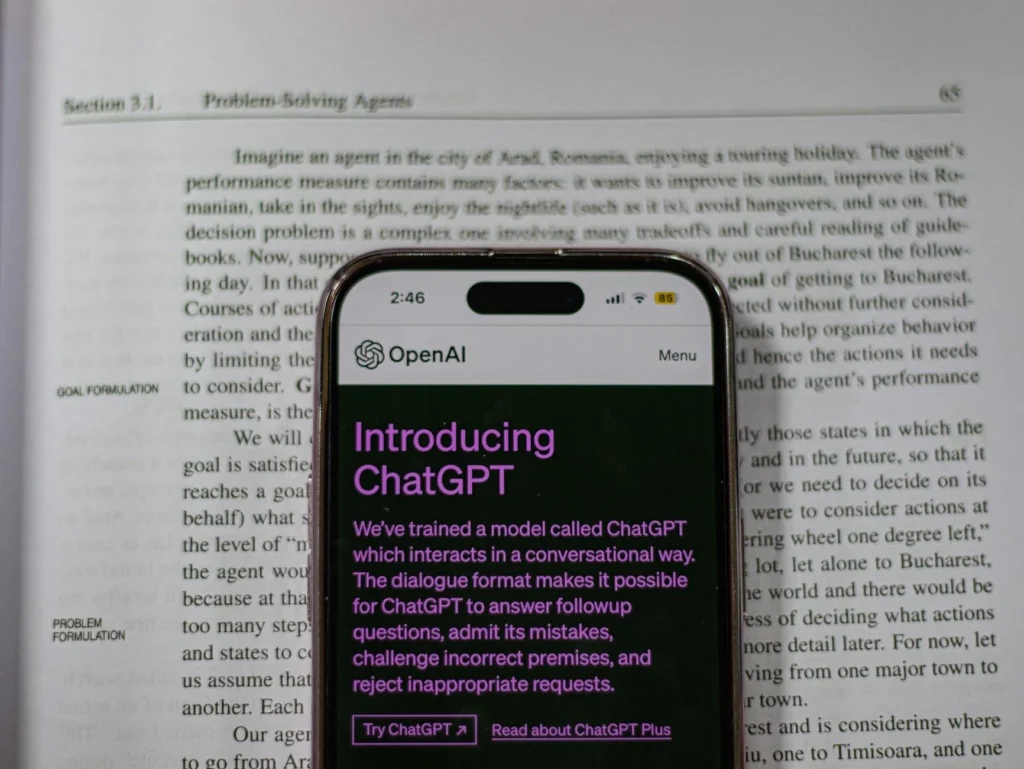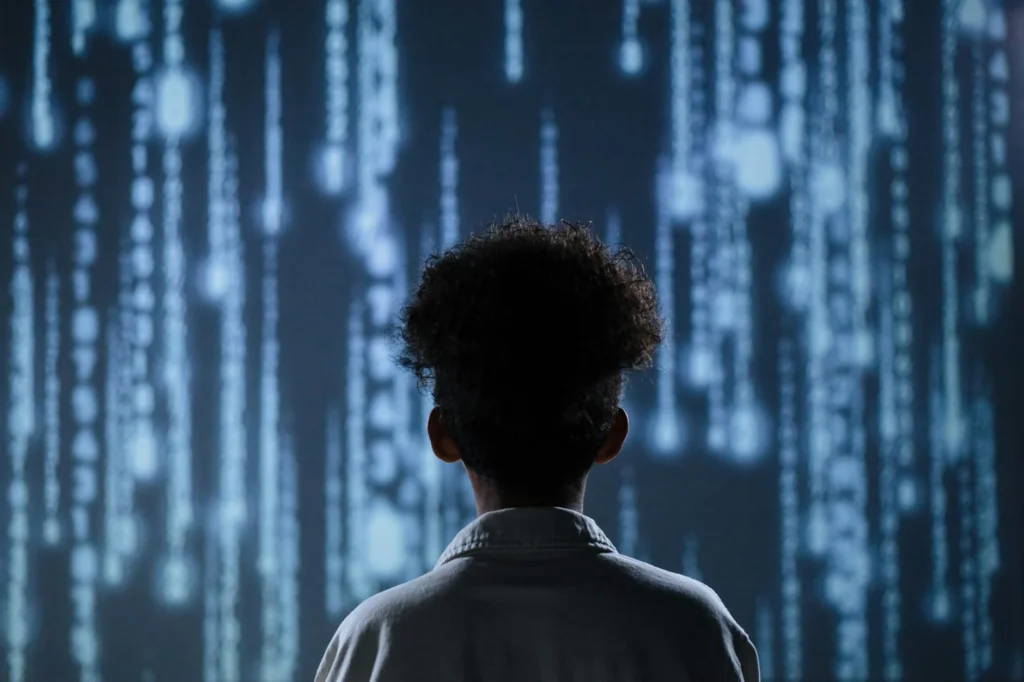
We offer a comprehensive curriculum developed by an international team, experienced teachers, and a focus on individualized and project-based learning.

We offer a comprehensive curriculum developed by an international team, experienced teachers, and a focus on individualized and project-based learning.

AI is transforming education, and teachers are at the heart of this evolution. By streamlining tasks like grading and lesson planning, AI tools give educators more time to focus on what matters most—teaching. Yet, using these technologies effectively within educational environments requires proper training.
With courses covering essentials like prompt engineering, ethical AI use, and classroom integration, educators can unlock tailored student experiences, enhance instruction, and boost their own professional growth. At Future Classroom, we’re equipping schools with interactive, tech-driven strategies that prepare students for the future. Ready to reshape education? Let’s build the classroom of tomorrow together.

Artificial intelligence (AI) is revolutionizing the educational landscape, offering innovative solutions to enhance teaching practices, improve student outcomes, and streamline administrative tasks. By leveraging AI, educators can create personalized learning experiences, automate grading and feedback, and boost student engagement. As AI continues to evolve, its integration into educational settings becomes increasingly essential for education professionals aiming to stay ahead in a tech-driven world.
Artificial intelligence (AI) in education refers to the use of machine learning algorithms and natural language processing to enhance teaching practices, improve student outcomes, and increase efficiency in educational settings.
AI has the potential to revolutionize the way we learn and teach, making it an essential tool for education professionals. By leveraging AI, educators can create personalized learning experiences, automate grading and feedback, and enhance student engagement.
Imagine a classroom where AI tools analyze student performance in real-time, providing instant feedback and tailored learning paths. This not only helps students grasp concepts more effectively but also allows teachers to focus on more meaningful interactions.
AI can also automate repetitive tasks like grading, freeing up valuable time for educators to innovate and engage with their students more deeply. In essence, AI empowers teachers to enhance their teaching practices and create a more dynamic, responsive educational environment.
The journey of AI in education began in the 1960s with the development of the first computer-based learning systems. These early systems laid the groundwork for what would become a transformative force in education. However, it wasn’t until the 2010s that AI truly began to gain traction in educational settings. The advent of advanced machine learning and natural language processing technologies opened new possibilities for AI-powered tools and platforms.
Today, AI is being used in various educational contexts, from K-12 to higher education, to enhance teaching and learning. For instance, intelligent tutoring systems can provide personalized instruction, while AI-driven analytics help educators identify and address learning gaps. The evolution of AI in education reflects a broader trend towards integrating technology to create more effective and engaging learning experiences.

AI training for teachers is quickly becoming an essential part of modern education, equipping educators with skills to use artificial intelligence tools effectively in their classrooms. Instructional leaders play a crucial role in implementing these AI strategies, working alongside K-12 educators and administrators to enhance teaching and learning outcomes.
These programs focus on teaching practical AI applications to support teaching and learning, streamline administrative tasks, and craft personalized learning experiences for students. With the right knowledge, teachers can unlock AI’s potential to enhance their instructional strategies and prepare students for an AI-integrated future.
You’ve probably heard about AI tools like generative AI and ChatGPT, but how do they fit into the educational context of the classroom? AI in education goes beyond flashy tech trends—it’s about practical applications that solve real problems. For example:
Classroom Assistants: Tools like ChatGPT can help teachers answer student questions, brainstorm lesson ideas, or even generate quizzes in seconds.
Generative AI: This tech can create personalized study materials such as notes, flashcards, and interactive visuals tailored to a student’s learning pace.
Administrative Automation: AI is being used to grade assignments, track attendance, and even analyze student performance to pinpoint where additional support is needed.
Think of AI as the teacher’s extra set of hands, working behind the scenes so you can focus on engaging with your students. At Future Classroom, we’re committed to integrating tools into classrooms that make learning tech-savvy, fun, and effective.
Artificial intelligence (AI) is a broad field of computer science that focuses on creating intelligent machines capable of performing tasks that typically require human intelligence. Within this field, machine learning is a subset that involves training algorithms on data to enable them to make predictions, classify objects, and make decisions. In the context of education, machine learning can be used to analyze student data, identify learning patterns, and provide personalized recommendations for instruction.
For example, machine learning algorithms can analyze a student’s performance across various subjects, identifying strengths and areas for improvement. This data-driven approach allows educators to tailor their teaching strategies to meet individual student needs, enhancing the overall learning experience. By integrating AI and machine learning into educational settings, teachers can leverage data to make informed decisions, ultimately improving student outcomes.

Computational thinking is a problem-solving approach that involves breaking down complex problems into smaller, manageable parts and using algorithms and data to solve them. AI can significantly enhance computational thinking by providing students with tools and platforms that enable them to design, develop, and test algorithms. By integrating AI into educational settings, educators can help students develop essential problem-solving skills, critical thinking, and creativity.
For instance, AI-powered coding platforms can guide students through the process of creating their own algorithms, offering real-time feedback and suggestions. This hands-on experience not only reinforces computational thinking but also fosters a deeper understanding of how AI works. By incorporating AI into the curriculum, educators can prepare students for a future where problem-solving and critical thinking are paramount.
At Future Classroom, we’re transforming the way students learn by bringing the best technology-driven experiences to schools. Our mission is to prepare young minds for a rapidly evolving world, equipping them with vital coding, digital literacy, and problem-solving skills. Join us as we reshape the future of education!
AI in the classroom isn’t just a trend—it’s here to stay. So, why is it vital for teachers to have AI training? Because it can empower you to:
Enhance Engagement: AI-powered tools make lessons more interactive and student-focused, helping you capture attention and sustain curiosity.
Enhance Student Learning: By identifying learning gaps, AI can guide intervention plans and ensure every student gets the support they need, leading to improved learning outcomes.
Save Time on Repetitive Tasks: Writing reports, creating rubrics, and grading can be automated, leaving you more time to dedicate to teaching.
Imagine being free from mundane tasks and having the insight to adjust your teaching in real-time, all with the help of AI. Learning these skills allows you to stay ahead of the curve in education.

So, what exactly does “AI training for teachers” involve? These programs typically focus on a few key areas to help teachers integrate AI into their teaching practice responsibly and effectively:
Ethical AI Use: Learn how to use AI tools while protecting student privacy and avoiding bias.
Prompt Engineering: Mastering how to ask the right questions (or prompts) to tools like ChatGPT for more accurate and tailored results.
Hands-On Applications: Get practical experience with tools designed for education, from lesson plan generators to AI-powered grading software.
These components are designed to ensure teachers not only feel confident in using AI but also understand its limitations and ethical considerations. At Future Classroom, we prioritize teacher-centered training to meet these objectives, empowering you to lead classrooms of the future.
At Future Classroom, we’re transforming the way students learn by bringing the best technology-driven experiences to schools. Our mission is to prepare young minds for a rapidly evolving world, equipping them with vital coding, digital literacy, and problem-solving skills. Join us as we reshape the future of education!
Artificial intelligence is changing the education landscape in ways that make teaching more effective, personalized, and manageable. However, the key to truly unlocking AI’s potential lies in equipping educators with the right skills to use these tools effectively. Training educators to adopt AI doesn’t just benefit classrooms—it empowers teachers in meaningful ways that impact their daily routines, student engagement, and long-term outcomes. Here’s how.
Let’s face it—tasks like grading and lesson planning can take up a significant chunk of your workweek. AI tools are designed to streamline these repetitive, time-consuming jobs, giving you more hours to do what matters most: teach. Automated grading systems can assess assessments in minutes, while lesson planning software can suggest activities aligned with educational standards based on your input. Imagine being able to review a lesson plan or test results instantly instead of spending hours pouring over them manually.
When you’re no longer bogged down by administrative tasks, your energy and attention can shift to more creative and impactful efforts. Whether it’s engaging with students during class or designing new learning projects, AI is freeing up valuable time you didn’t even know you had. And the best part? It doesn’t mean sacrificing quality—these tools often improve precision and consistency in addressing administrative needs.
No two students learn the same way, and meeting everyone’s unique needs can be one of the biggest challenges in the classroom. AI training enables you to take full advantage of tools like intelligent tutoring systems and learning analytics platforms, which can tailor educational experiences to each student. These tools track student progress, analyze learning habits, and suggest individualized interventions for better understanding.
Personalized learning is no longer just an ideal; with AI, it can become a practical, everyday reality for your classroom. Tools powered by AI can recommend unique homework assignments or extra resources to the students who need the most support, while providing faster learners with advanced material to keep them challenged. This means fewer students falling behind and more feeling engaged—every teacher’s goal.

Technology can be intimidating, especially if you’re not a so-called “tech expert.” But here’s the thing: AI training is designed to meet you where you are. Through proper education and hands-on practice, you can build confidence in integrating AI into your classroom without fear of misusing it. Training programs often focus on ethical considerations, practical application, and troubleshooting for real-world teaching, making you feel more prepared to step into the future of education.
The better your tools, the better you can teach—and the better prepared you are to inspire your students. AI isn’t here to replace you; it’s here to amplify your capabilities. With the right training, you may even find yourself becoming a role model for other faculty members hesitant to dive into AI technology.
The modern world is increasingly defined by technology, and the careers your students will pursue will demand fluency in digital tools, AI inclusively. By learning how to effectively implement AI in your lessons, you can show students how these tools solve real-life problems while encouraging critical thinking. For example, AI can provide simulated environments for problem-solving activities or guide students through adaptive coding exercises.
As a teacher, your role isn’t just to teach the syllabus—it’s to prepare students for what comes next. Proper AI training allows you to stay ahead of the curve, equipping students with skills and mindsets needed in emerging tech-driven industries. You’re not just building lessons—you’re shaping digital citizens ready to contribute responsibly to a tech-enabled world.
At Future Classroom, we’re transforming the way students learn by bringing the best technology-driven experiences to schools. Our mission is to prepare young minds for a rapidly evolving world, equipping them with vital coding, digital literacy, and problem-solving skills. By integrating fun, interactive, and personalized learning pathways, we make education not just a necessity but an exciting journey. Join us as we reshape the future of education.
As AI becomes more embedded in classrooms, teachers need specialized training to navigate and utilize these tools effectively. Fortunately, several reputable programs provide comprehensive and accessible AI training for educators. These programs not only enhance teaching methods but also equip you with practical knowledge to craft personalized learning experiences for students. Let’s explore some of the top offerings available.

Google’s Generative AI for Educators is a compact yet robust course that fits seamlessly into a busy teacher’s schedule. This self-paced program spans just two hours, ensuring efficient use of your time. What makes it stand out are the practical tools it introduces, such as AI templates for lesson planning, assessment creation, and classroom management tips. Whether you’re creating custom quizzes or brainstorming project ideas, the course equips you with actionable skills to enhance your classroom strategy.
You’ll also learn how to personalize materials to adapt to each student’s unique pace and preferences. Plus, Google’s hallmark of simplicity ensures that you can dive into AI applications even if you’re completely new to the subject. It’s a short time commitment with long-term teaching rewards.
Offered by leading experts, Coursera’s AI for Teachers Module dives into the wider scope of AI in education. This course goes beyond surface-level tools, making it suitable for every grade level from elementary to high school. You’ll explore key topics like computational thinking and the ethical use of AI, helping you stay informed about issues like student data privacy.
Another highlight? You’ll gain insights into how AI fosters problem-solving skills and creative thinking, bridging these capabilities directly into your curriculum. This module doesn’t just equip you with knowledge; it empowers you to design lessons that prepare students for a tech-driven future, making your classroom a space for innovation.
Microsoft brings AI-powered tools directly into the hands of educators through its AI Training Paths. These programs are tailored to help teachers integrate AI into tools like Microsoft Word, PowerPoint, and Edge. Imagine using an AI assistant to suggest edits in documents, enhance presentations with data visualizations, or recommend resources that align directly with your lesson objectives. Sounds like a productivity boost, doesn’t it?
Microsoft also includes access to Minecraft Education Edition, where you can use AI tools to teach STEM concepts in a fun and engaging way. The training prepares you to use everyday tools in smarter, more dynamic ways—perfect for creating tech-savvy classrooms that excite students about learning.
If you’re looking for a more in-depth, hands-on approach, ISTE’s Artificial Intelligence Explorations is key. This 15-hour course is designed specifically for K-12 educators and focuses heavily on interactive learning. Instead of just delivering theory, it provides you with direct experience in integrating AI into lesson plans and classroom activities.
No prior AI knowledge or programming skills are required, making the program accessible for educators at all levels. The course also emphasizes the practical and ethical use of AI, which aligns with today’s need for responsible technology applications in education. It’s a deep dive into AI that prepares you to confidently lead your students into the future while making learning exciting and relevant.
At Future Classroom, we’re transforming the way students learn by bringing the best technology-driven experiences to schools. Our mission is to prepare young minds for a rapidly evolving world, equipping them with vital coding, digital literacy, and problem-solving skills. By integrating fun, interactive, and personalized learning pathways, we make education not just a necessity but an exciting journey. Join us as we reshape the future of education!

AI training for teachers has the potential to revolutionize classrooms, but integrating these programs is not without hurdles. From limited resources to resistance among educators, schools face several obstacles in embracing AI fully. Understanding these challenges is key to creating solutions that make AI adoption seamless and effective.
Many schools operate within strict budgets, which can limit their ability to roll out high-quality AI training for teachers. Here’s why resource constraints pose a significant barrier:
Funding Issues: AI training programs and technology infrastructure often come with hefty price tags. Purchasing licenses, software, and hardware, as well as financing the training itself, can strain tight school finances.
Limited Access to Technology: Some schools, particularly in underfunded districts, still lack the foundational tech tools needed for AI implementation. Without up-to-date devices and stable internet, advanced AI tools remain out of reach.
Lack of Time for Training: Teachers are already burdened with packed schedules. Allocating time for meaningful training sessions can feel impossible in a system where staffing shortages or jam-packed curriculums are common.
Without adequate investment in tools, support systems, and scheduling flexibility, many schools struggle to get AI training initiatives off the ground.
Even with resources in place, resistance among teachers can be a major hurdle. Many educators are wary of AI for several reasons, including fear of job displacement or a general unwillingness to change established teaching methodologies. So, how can schools address these concerns?
Highlight Collaboration, Not Replacement: Educators need to know that AI isn’t a substitute for human interaction but a tool to amplify their abilities. For example, AI can free up time by handling repetitive tasks like grading, allowing teachers to focus on students.
Share Real Success Stories: Show examples of AI positively impacting classrooms. Concrete evidence can help dispel doubts and make the abstract idea of AI feel more approachable.
Offer Hands-On Demonstrations: Skepticism often arises from the unknown. Hosting practical workshops where teachers can actively use AI tools can ease fears and increase curiosity.
Engage Early Adopters: Teachers who embrace AI early can act as champions for the technology, sharing their positive experiences with peers and creating a ripple effect across the school.
With the right approach, it’s possible to turn initial resistance into enthusiasm and collaboration.
For many teachers, stepping into AI feels like entering unknown territory. A lack of technical know-how can make the process intimidating, especially for educators without a tech background. Bridging this skills gap is essential for the successful adoption of AI in classrooms. Here’s how schools can make it happen:
Start Simple with Beginner-Friendly Courses: Offer training that avoids jargon and focuses on practical, real-world applications. Teachers don’t need to understand algorithms to benefit from using AI tools.
Provide Ongoing Support and Mentorship: After initial training, offer continued support, whether through quick guides, Q&A sessions, or on-site tech mentors. Constant access to help minimizes uncertainty.
Encourage Peer Collaboration: Teachers often learn best from each other. Create opportunities for educators to share tips, challenges, and success stories around AI in informal settings like workshops or dedicated discussion groups.
Use Tools with Built-In Simplicity: AI solutions like Microsoft Copilot or ChatGPT are designed to be user-friendly. Tools that integrate seamlessly into current workflows reduce the learning curve and increase adoption rates.
By building confidence and offering user-centered support systems, the path to AI proficiency becomes far less daunting.
At Future Classroom, we’re transforming the way students learn by bringing the best technology-driven experiences to schools. Our mission is to prepare young minds for a rapidly evolving world, equipping them with vital coding, digital literacy, and problem-solving skills. By integrating fun, interactive, and personalized learning pathways, we make education not just a necessity but an exciting journey. Join us as we reshape the future of education.

Artificial intelligence is reshaping the way classrooms operate by introducing solutions to common challenges and enhancing both teaching and learning processes. It’s about collaboration, personalization, and accessibility, giving educators the ability to better serve students while saving time and resources. Let’s explore the potential AI offers in transforming education.
Think of AI as your co-teacher—one that works tirelessly in the background to create richer, more engaging learning environments. Rather than replacing human educators, AI can supplement their work, empowering them to focus on the human side of teaching.
AI can handle repetitive tasks, like grading assignments or organizing lesson plans, allowing you to dedicate more time to teaching and connecting with students. Picture an interactive math game tailored to a student’s skill level or a language-learning bot that provides immediate feedback on grammar mistakes—all deployed with minimal effort on your part. These tools not only create immersive experiences but also adapt in real time to meet individual student needs.
Moreover, AI-driven systems can predict areas where students struggle and suggest targeted interventions, enabling you to step in at just the right moment. This collaboration fosters a seamless classroom dynamic, making education more efficient without losing the human touch. With AI by your side, you’ll have the edge to inspire and motivate students like never before.
Professional development for educators has traditionally been constrained by time, structure, and relevance. But AI is changing this, turning the focus toward personalized growth at a pace and style that works for you.
Imagine having access to an AI mentor that analyzes your teaching patterns, provides feedback, and suggests areas for improvement. With AI-powered tools, you can access tailored training modules, real-time advice, and progress tracking to refine your skills continually. If you’re experimenting with a new teaching method or technology, AI-based simulations can help you rehearse before implementing changes in your classroom.
For example, tools like coaching apps or AI-backed assessments offer evidence-based insights into what’s working and what needs adjustment. By tracking these feedback loops over time, you gain an evolving roadmap to achieve specific teaching goals. Plus, you won’t feel left behind amidst constantly changing educational trends because these tools will help you stay ahead.
AI is also a catalyst for collaboration. Platforms built with AI can connect teachers across the globe, allowing you to share ideas, strategies, and challenges in real time. It’s professional development made smarter, not harder.

True education includes everyone, regardless of learning abilities, and AI is paving the way for more inclusive classrooms. From assisting students with disabilities to supporting those with different learning paces, this technology ensures no one gets left behind.
AI-powered tools such as text-to-speech and speech-to-text systems are already transforming learning for students with physical or learning differences. For instance, a student who struggles with writing can dictate their essays using AI, or someone with visual impairments can access reading materials in audio formats instantly. By leveling the playing field with such adaptive resources, you’re ensuring every learner gets an equal chance to succeed.
But inclusivity isn’t just about making material accessible—it’s also about understanding and adapting to diverse learning styles. AI helps track individual student progress and offers insights into what works best for each individual. Whether it’s breaking a complex topic into smaller steps or offering visual aids where words might fail, AI enables you to customize education in a way that meets your students where they are.
Why limit yourself to one-size-fits-all teaching methods? Incorporating AI lets you prioritize equity and inclusivity, fostering a classroom where everyone feels seen and supported.
At Future Classroom, we’re transforming learning with innovative, technology-driven solutions. Our mission is to equip young minds with the skills they need for tomorrow’s challenges, from digital literacy to creative problem-solving. Using AI and personalized learning strategies, we create experiences that make education exciting, inclusive, and deeply impactful. Join us in building schools that succeed for every student.

AI training for teachers represents a pivotal step in transforming education. By adopting these skills, you’re not just enhancing classroom efficiency but also personalizing learning experiences to meet every student’s needs. AI empowers educators to focus more on impactful teaching and equips students for the future.
Your role as a teacher will always be irreplaceable, but AI serves as a partner to refine your approach and unlock possibilities that were once unattainable. The future of education isn’t about choosing between tradition and technology—it’s about using both to inspire innovation and inclusion.
At Future Classroom, we’re committed to equipping schools and educators with cutting-edge tools and strategies. Our mission is simple: prepare today’s learners for tomorrow’s challenges through engaging, tech-driven education. Start your journey with us and be part of shaping the classroom of the future. Let’s make learning extraordinary, together.

FutureClassroom is Southeast Asia's largest coding platform for K-12, empowering students with essential skills in Web Development, Game Development, Python, and AI. Aligned with Cambridge and Pearson standards, our platform combines interactive learning and real-world projects to prepare young learners for a future driven by technology.
View all posts
FutureClassroom is Southeast Asia's largest coding platform for K-12, empowering students with essential skills in Web Development, Game Development, Python, and AI. Aligned with Cambridge and Pearson standards, our platform combines interactive learning and real-world projects to prepare young learners for a future driven by technology.
Get all the latest information, support and guidance about the cost of living with kindergarten.
Start Registration